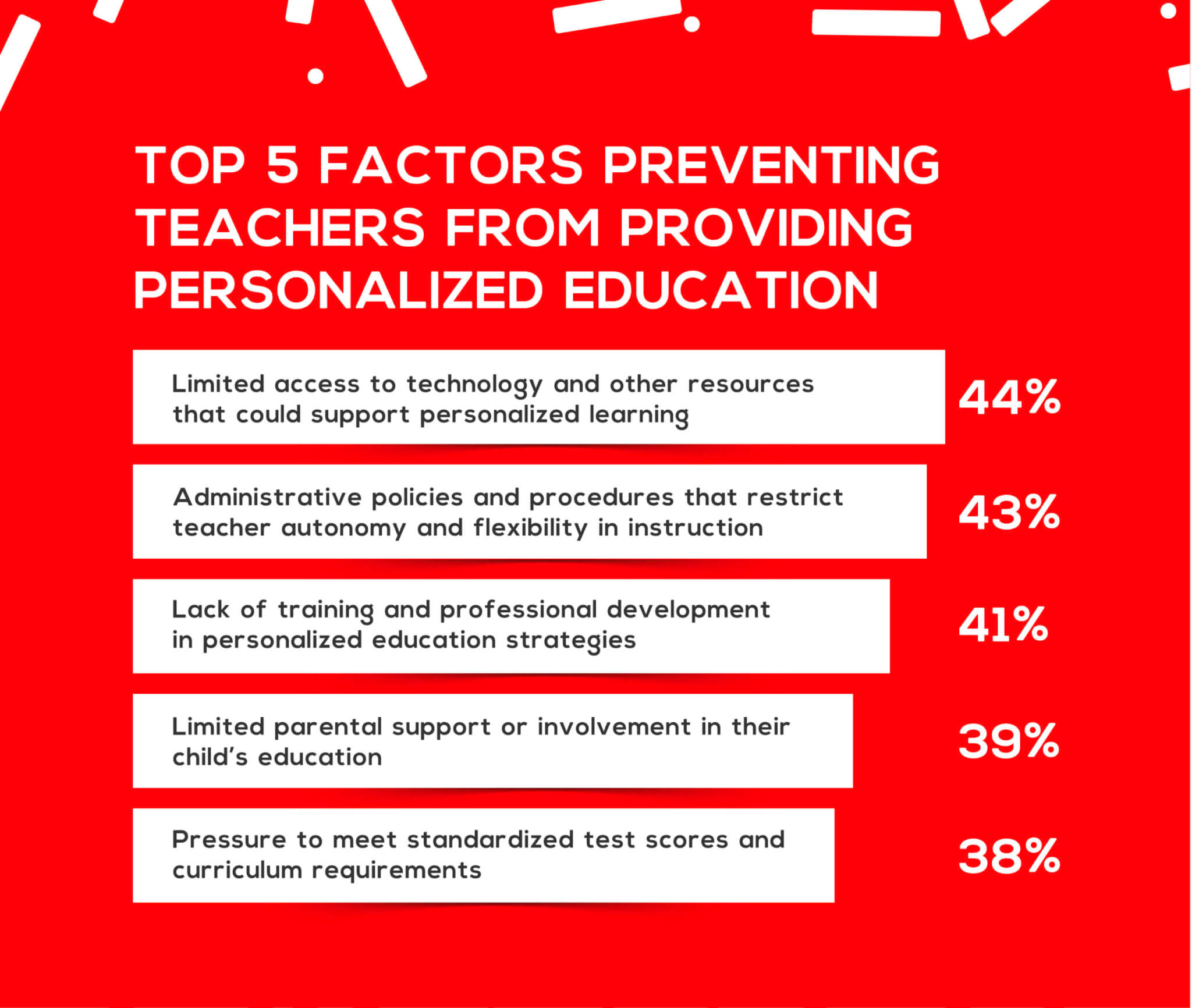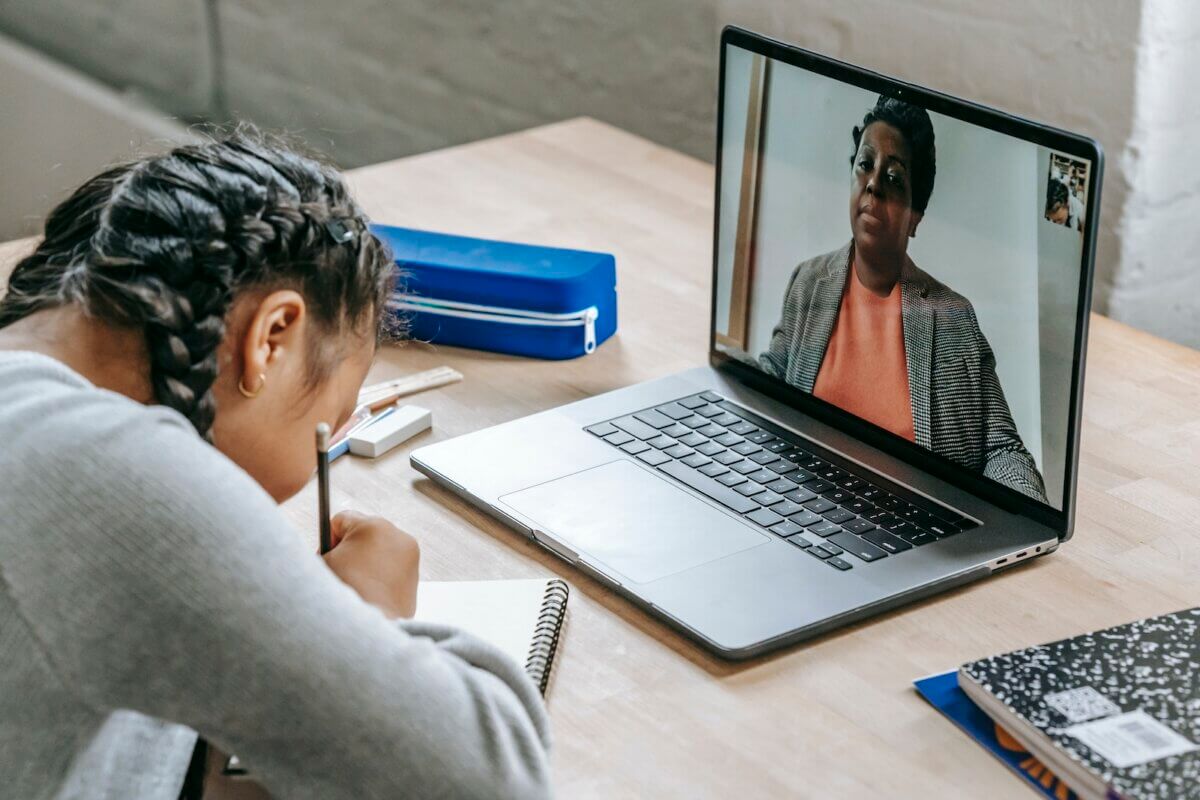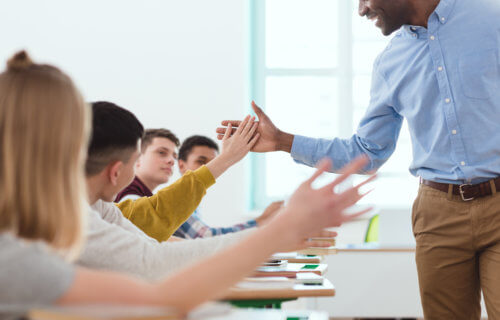NEW YORK — Everyone learns differently, which is why teachers are looking for new creative methods to reach every student. However, seven in 10 high school teachers agree that a one-size-fits-all education, with the same curriculum and teaching methods for all students, is a thing of the past.
The traditional classroom model seems to require a shift as the majority (67%) prefers to have fewer than 20 students in a classroom, according to a survey of 2,000 high school teachers. Over half (51%) feel uncertain about their ability to impact their students’ performance in a traditional large-group classroom setting.
According to the survey, conducted by OnePoll on behalf of Learn4Life, most high school teachers (86%) are familiar with personalized learning, an alternative to traditional group learning that aims to customize learning for each student’s strengths, needs, skills, and interests.
Seventy-eight percent of high school teachers reported being able to identify the learning styles, challenges, and goals of each of their students, while 22 percent were unsure. However, when creating personalized learning plans for each student, almost one-third of teachers expressed uncertainty about their ability to do so.

Teachers have identified several obstacles to providing personalized education, including limited access to technology and resources to support personalized learning (44%), administrative policies and procedures that restrict teacher flexibility in instruction (43%), and a lack of training and professional development in personalized education strategies (41%).
Personalized learning is believed by 53 percent to mitigate behavioral issues in the classroom. Moreover, teachers see it as a way to reduce anxiety and stress (50%), improve educational outcomes (51%), boost engagement (49%), and enhance creativity (51%). Among the teachers, 86 percent believe in personalized learning, with 27 percent believing it should start in high school.
Ninety-two percent of teachers described their ideal classroom. For design, 24 percent said they preferred a more collaborative design with tables or desks in groups to facilitate and 21 percent said they’d want a space that allows flexibility for small group work and one-on-one instruction.

“In our rapidly changing world where every service is becoming increasingly individualized, the days of a teacher lecturing in front of a classroom are becoming obsolete,” says Learn4Life superintendent of schools, Shellie Hanes, in a statement. “We need to change up the structure of our classrooms for more collaboration and one-on-one teaching with our students.”
If schools incorporate personalized learning, 52 percent of teachers believe it will provide benefits such as individualized attention and accommodations to meet the needs of students, while 47 percent believe it will create a more engaging and interactive learning experience.
Additionally, 59 percent believe it can help students build positive relationships with their teachers and peers, ultimately reducing conflicts and negative behavior. A positive trend appears to be emerging as an increasing number of teachers (78%) believe that the field of education is evolving to address the unique needs of each student effectively.
Furthermore, the COVID-19 pandemic has accelerated the adoption of remote learning, and many students and teachers believe that certain aspects of virtual learning should be integrated into in-person high schools. Specifically, 57 percent of respondents found that remote learning allowed students to complete assignments at their own pace, and 53 percent believed it provided parents with greater visibility into the classroom experience.
More than half (52%) enjoyed the online discussion forums for class participation, and 45 percent appreciated the availability of recorded lectures for students to review material.
“The more we tailor what and how we teach to the individual student, the more they learn,” adds Hanes. “And that’s true no matter the skill level of the student – from gifted to those with special needs. We can accomplish this in any classroom setting.”
While there are challenges to personalized education, teachers highlight the benefits and feel it is needed as education is evolving to meet the individual needs of each student.
Survey methodology:
This random double-opt-in survey of 2,000 high school teachers was commissioned by Learn4Life between April 5 and April 19, 2023. It was conducted by market research company OnePoll, whose team members are members of the Market Research Society and have corporate membership to the American Association for Public Opinion Research (AAPOR) and the European Society for Opinion and Marketing Research (ESOMAR).

